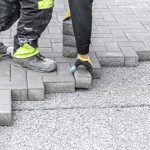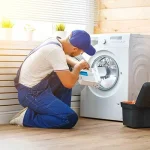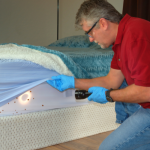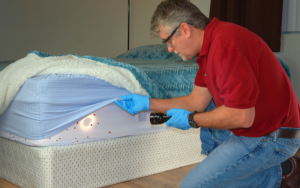
Issues frequently arise from prevailing mistakes during the creation of paver patios or poor support practices. Understanding the main causes of paver switching and cracking can help you halt damage and extend the lifespan of your rustic surfaces.
Poor Base Preparation
A powerful organization is the key to a long-lasting paver surface. When the base is not properly planned, it becomes unstable, inducing pavers to shift or fall over.
1. Common mistakes include:
- Insufficient digging awareness before laying the base
- Uneven or loosely compacted base material
2. How to avoid it:
- Excavate not completely 6–8 inches beneath the final grade for driveways and 4–6 inches for porches or walkways.
- Apply crushed crystal or gravel as the base level, not soil or sand only.
- Compact each tier thoroughly, utilizing a plate compactor to generate a solid establishment.
A properly compressed base distributes weight proportionately and prevents activity caused by cars, weather, or ground settling.
Improper Edge Restraints
Edge restraints are essential for custody pavers locked in place. Without them, pavers slowly shift outward, leading to irregular edges and surface instability.
1. Signs of weak edging:
- Paver’s forthcoming the perimeter, segregating or lifting
- Gaps made between outer pavers
- Loose soil escaping from the edges
2. Prevention tips:
- Install powerful edge restraints made of plastic, concrete, or metal.
- Secure them tight with spikes or stakes.
- Ensure edge restraints are kind of below the paver surface to claim a clean look while providing support.
Proper edging of paver driveways keeps your pavers interlocked and hampers outward movement through foot or bicycle pressure.
Skipping Joint Sand Stabilization
Joint sand holds pavers in place by filling the break between them. If this sand is not correctly installed or compacted, pavers can loosen, shift, and finally crack.
1. Common causes:
- Failing to use polymeric sand (which hardens when wet)
- Not sweeping sand correctly into all joints
- Skipping the conclusive compaction step after sanding
2. Prevention methods:
- Use polymeric joint soil to bind pavers securely.
- After installation, sweep the soil into all joints and use a plate compactor to settle it equally.
- Refill joints systematically as part of routine sustenance.
Stabilized sand provides resistance and strength, custody your paver system close and aligned.
Heavy Loads or Incorrect Paver Selection
1. Mistakes to prevent:
- Using thin patio pavers on driveways
- Choosing beautifying pavers with depressed load capacity
- Ignoring maker specifications
2. Best practices:
- Use thicker pavers (at least 80mm) for driveways and tool pathways.
- For patios and walkways, 60mm pavers are mainly sufficient.
- Choose pavers planned for your intended use and environmental conditions.
Lacking Regular Inspection
Ignoring maintenance leads to fluctuating, cracking, and surface degeneration.
1. Common neglect issues:
- Weeds growing between pavers, aggressively separate them
- Accumulated debris maintains moisture
- Erosion of joint soil from rain or cleaning
2. Simple perpetuation tips:
- Reapply joint soil and sealant every few years.
- Check for odd spots and fix them early before damage spreads.
Routine perpetuation helps prevent small issues from escalating into expensive repairs.
Conclusion
Paver changing and cracking are mainly the result of poor establishment practices or ignored support. So, hurry up and contact a reputable paver contractor in Danville now and solve these issues.







